Background and Scope of the Collection |
History of the Firm | Acquisition of the Collection | Photographers | Subjects
History of the Firm
The Detroit Photographic Company was launched as a photographic publishing firm in the late 1890s by Detroit businessman and publisher William A. Livingstone, Jr., and photographer and photo-publisher Edwin H. Husher. They obtained the exclusive rights to use the Swiss "Photochrom" process for converting black-and-white photographs into color images and printing them by photolithography. This process permitted the mass production of color postcards, prints, and albums for sale to the American market.
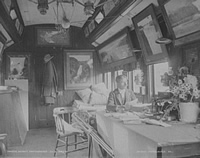 Detroit Photographic Co.'s Special. (William Henry Jackson seated at table). 1902. LC-D4-42272 |
Late in 1897, Livingstone persuaded the accomplished American landscape photographer, William Henry Jackson, to join the firm. This added the thousands of negatives produced by Jackson to the Detroit Photographic Company's inventory. Jackson's collection included city and town views, images of prominent buildings, scenes along railroad lines, views of hotels and resorts, and the like.
The nation's strong interest in the 1898 Spanish-American War and the expansion of U.S. Naval power accounts for the firm's large inventory of many photographs of Cuba and scenes related to the war and for the hundreds of images of warships.
In the late 1890s, the Detroit Photographic Company expanded their inventory to include photographic copies of works of art, which were popular educational tools as well as inexpensive home decor.
The firm was known as the Detroit Photographic Co. until 1905 when it became the Detroit Publishing Company. William Henry Jackson became the plant manager in 1903, leaving him with less time to travel and take photographs. With the declining sale of photographs and postcards during World War I, and the introduction of new and cheaper printing methods used by competing firms, the Detroit Publishing Company went into receivership in 1924. They liquidated their assets in 1932.
Acquisition of the Collection
In 1939 Jackson gave the Detroit Publishing Company negatives and prints to the Edison Institute (now known as the Henry Ford Museum) in Dearborn, Michigan. In 1949, the Edison Institute gave all of the negatives and many duplicate photographs to the Colorado Historical Society. The Colorado Historical Society transferred most of the negatives and prints for sites east of the Mississippi to the Library later that year.
Photographers
The best known photographer represented in the Detroit Publishing Company is William Henry Jackson (1843-1942). He moved to Nebraska after the Civil War and was active in the West from about 1870 to about 1890. His photographs for the U.S. Geological and Geographic Survey of the Territories influenced the establishment of Yellowstone and other early national parks (for examples of these images, see images in LOT 3546 and LOT 3960). In 1898 he became president of the Detroit Publishing Company, adding his stock of negatives to the company's files. He left the firm in 1924.
The Detroit Publishing Company collection includes negatives by many other photographers. During Jackson's era, photographers frequently purchased and sold negatives amongst themselves, with the current holder of the negative claiming authorship. In producing this electronic reference surrogate, an effort was made to recognize the role of individual photographers and companies represented in the Detroit Publishing Company. Information was gathered from various sources including the negative logbooks held at the Colorado Historical Society and information on the glass negatives themselves. Many negatives were attributed to William Henry Jackson based on these sources, as well as information listed in the Detroit Photographic Company catalog of 1898. Attributions could not be determined for every image. Researchers who would like to verify the photographers of specific images are encouraged to contact the Colorado Historical Society for information concerning specific images.
Subjects Represented
Subjects prominently represented in the collection include:
- buildings and views in towns and cities
- colleges and universities
- battleships and yachts
- resorts
- natural landmarks
- industry
- copies of paintings.
The photographs were made in a variety of locations. Most depict scenes in the United States (chiefly east of the Mississippi), together with some photographs of other nations in the Americas and Europe.
View a sampling
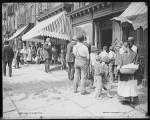 |
Streets [view selections] |
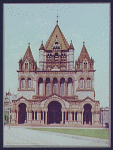 |
Architecture [view selections] |
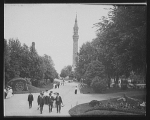 |
Parks and gardens [view selections] |
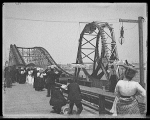 |
Recreation [view selections] |
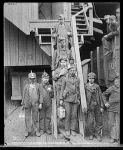 |
Industrial and work scenes [view selections] |
[START OVER] [ NEW SEARCH] [ "ABOUT" MENU] [ HELP]
( September 8, 2006 )